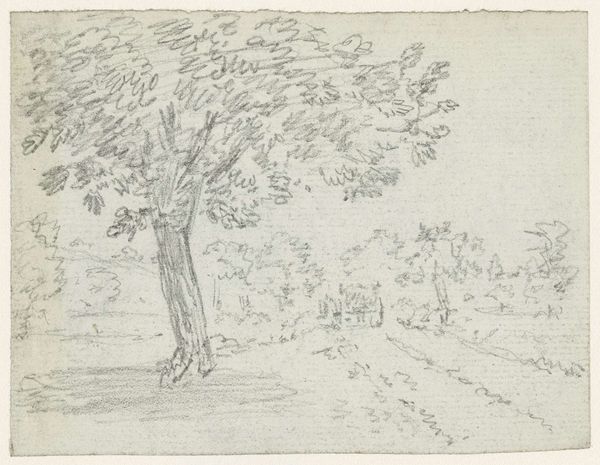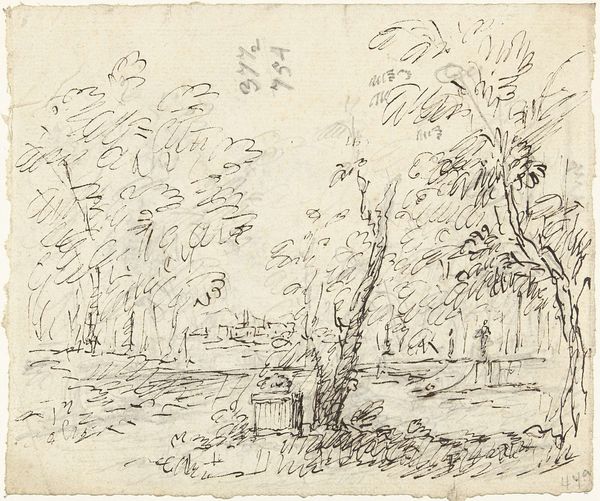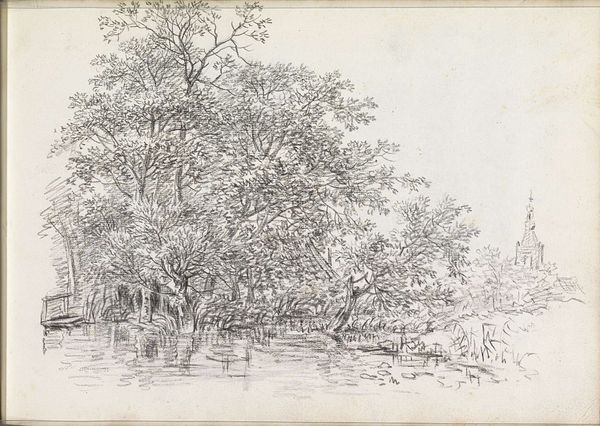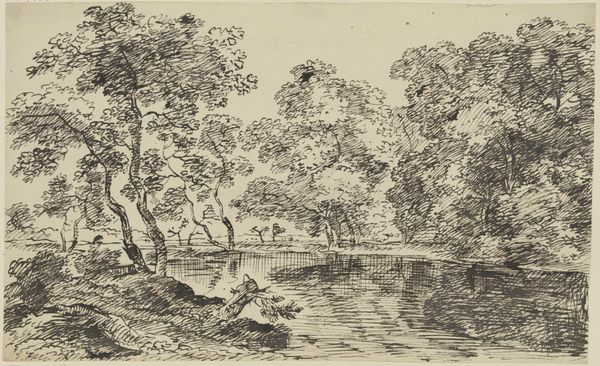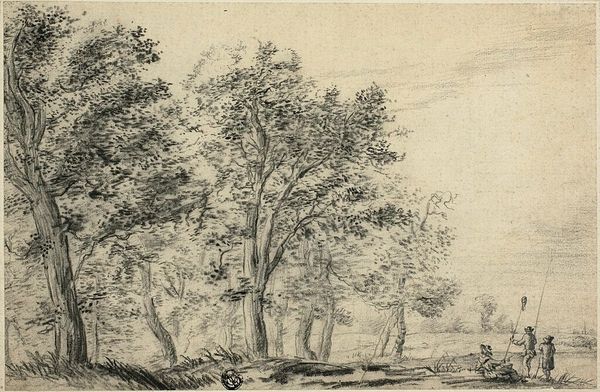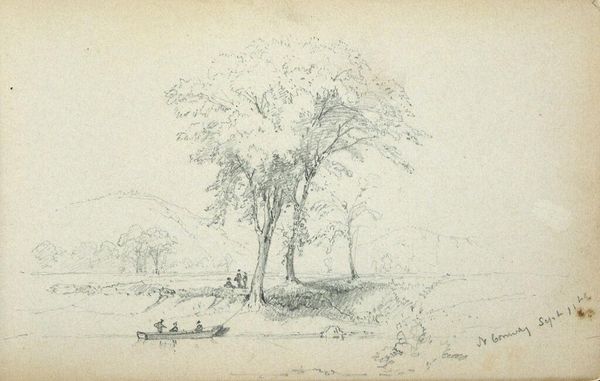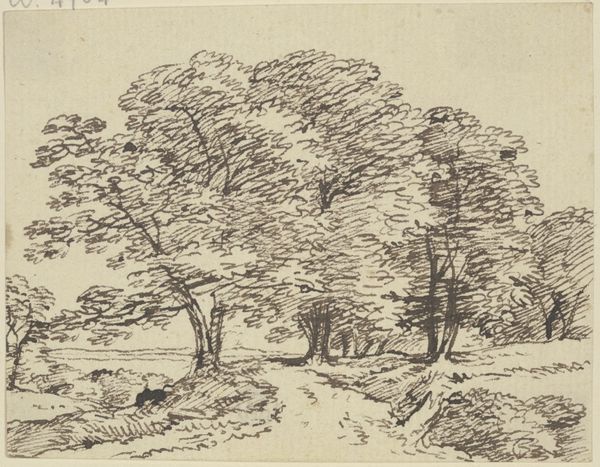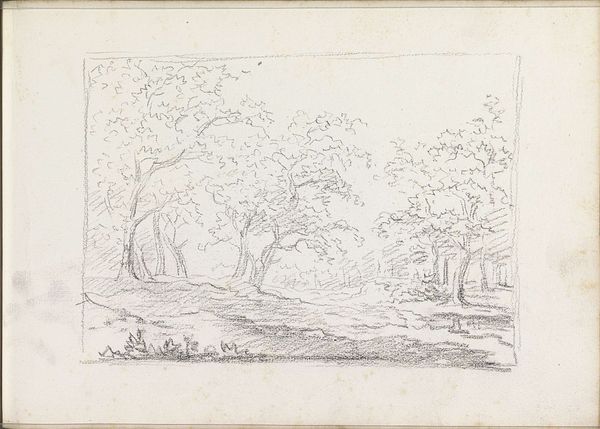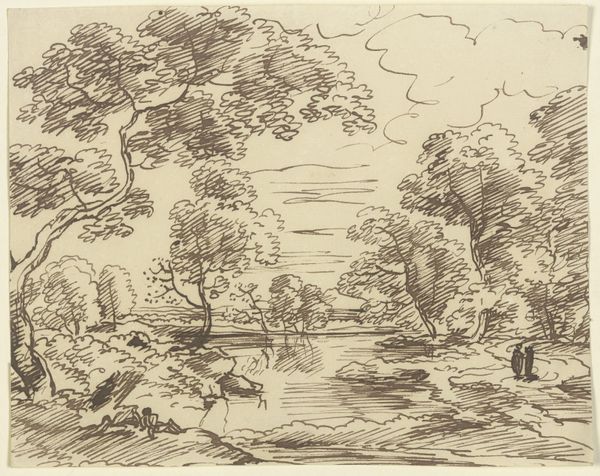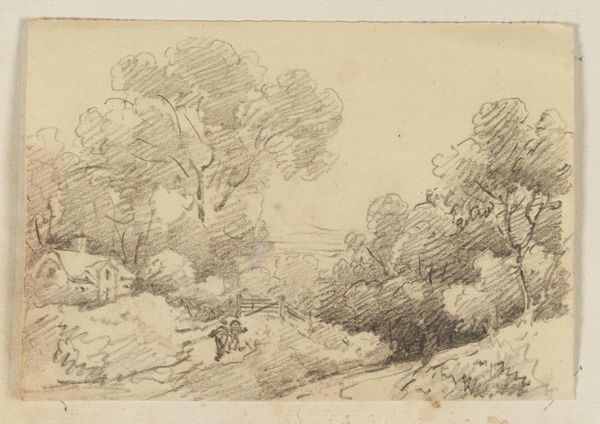
drawing, paper, ink
#
drawing
#
landscape
#
figuration
#
paper
#
ink
#
romanticism
#
line
Dimensions: height 108 mm, width 158 mm
Copyright: Rijks Museum: Open Domain
Curator: Looking at "Landscape with a Horseman, Walkers, and a Dog," made in 1847 by Jean Théodore Joseph Linnig, rendered in ink on paper... my first impression is how peaceful the whole scene is. It is quiet and pastoral, though perhaps a little gloomy, with its delicate linework. Editor: Peaceful, yes, but for whom? The very style in which this work has been created demands we interrogate a society of exclusion in Linnig's 1847 landscape. Whose access to nature is prioritized? Do we note a landed gentry depicted centrally upon the very vehicle which facilitated ownership—the horse? We cannot remove this work from such stark inequity. Curator: That's a potent reading. I do think Linnig is capturing the rise of the bourgeoisie, their increased leisure time. But I would say the landscape itself takes center stage—perhaps more than the individual figures, suggesting nature’s indifference to social hierarchies. It embodies romanticism, with an idealized view of the countryside as a refuge from industrialization. Editor: And yet, that refuge is actively managed. It doesn't present itself without the imposition of power. Consider the seemingly casual figures. Are they merely strolling, or are they surveilling, maintaining boundaries both literal and figurative? It begs consideration for contemporary dialogues around ownership and accessibility. We cannot overlook these inherent biases in the artistic production. Curator: Fair enough. Perhaps there is a tension there between romanticism’s yearning for untouched nature and the reality of social structures that shaped even seemingly untouched landscapes. I do find the drawing style fascinating—the lines are so fine, creating depth and texture. It is beautiful in its detail, even if it hides certain power dynamics within the image itself. Editor: It also reflects an ongoing conversation of image culture. Linnig certainly intended to depict a romantic moment. His artwork creates a historical precedence with clear tendrils woven into a 21st-century framework. One must recognize this manipulation for its influence. Curator: Thank you for those insightful comments! It makes the scene so much more interesting. Editor: And provides a fresh perspective from which we may view all art to come!
Comments
No comments
Be the first to comment and join the conversation on the ultimate creative platform.
